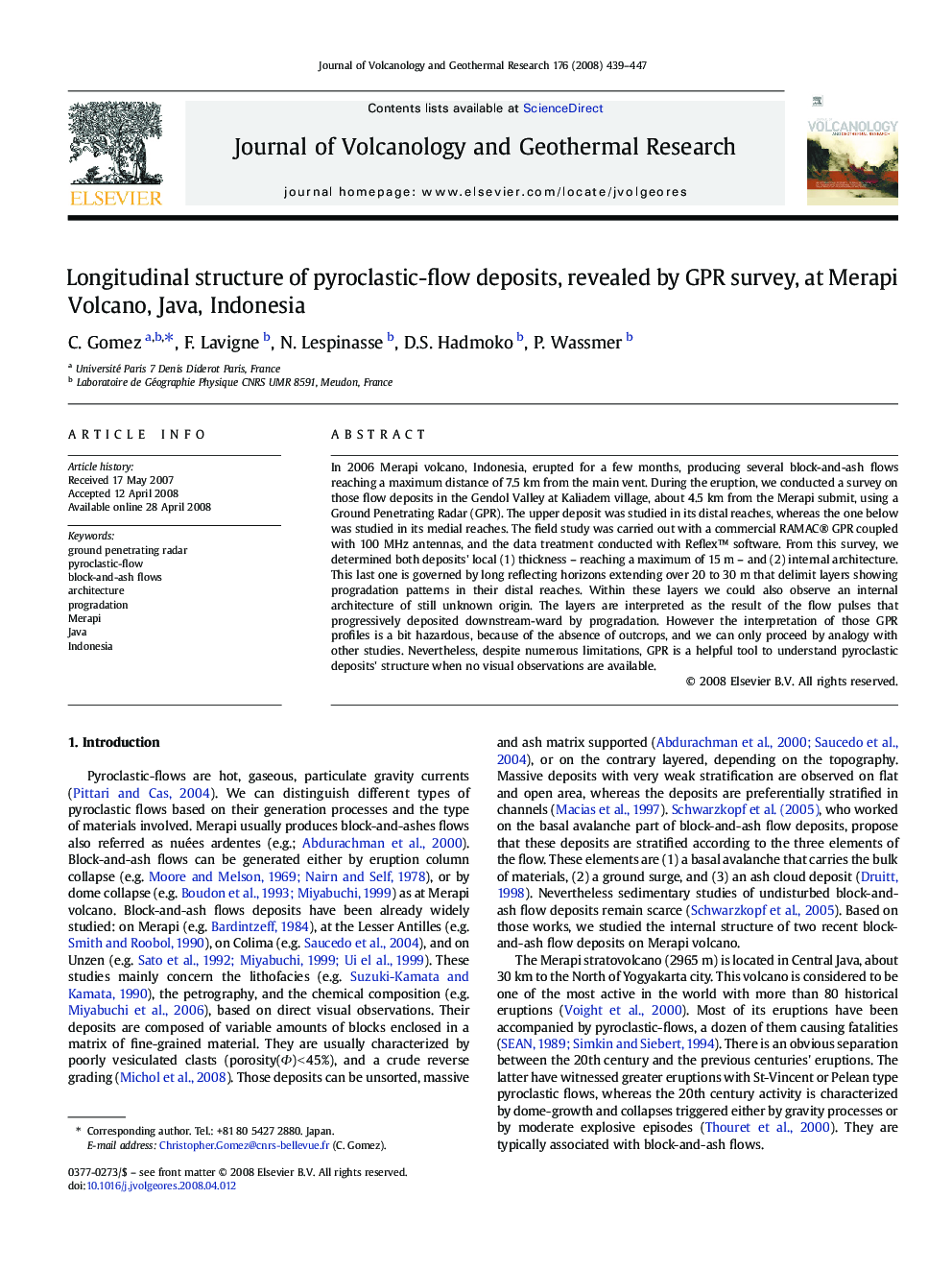| Article ID | Journal | Published Year | Pages | File Type |
|---|---|---|---|---|
| 4713544 | Journal of Volcanology and Geothermal Research | 2008 | 9 Pages |
In 2006 Merapi volcano, Indonesia, erupted for a few months, producing several block-and-ash flows reaching a maximum distance of 7.5 km from the main vent. During the eruption, we conducted a survey on those flow deposits in the Gendol Valley at Kaliadem village, about 4.5 km from the Merapi submit, using a Ground Penetrating Radar (GPR). The upper deposit was studied in its distal reaches, whereas the one below was studied in its medial reaches. The field study was carried out with a commercial RAMAC® GPR coupled with 100 MHz antennas, and the data treatment conducted with Reflex™ software. From this survey, we determined both deposits' local (1) thickness – reaching a maximum of 15 m – and (2) internal architecture. This last one is governed by long reflecting horizons extending over 20 to 30 m that delimit layers showing progradation patterns in their distal reaches. Within these layers we could also observe an internal architecture of still unknown origin. The layers are interpreted as the result of the flow pulses that progressively deposited downstream-ward by progradation. However the interpretation of those GPR profiles is a bit hazardous, because of the absence of outcrops, and we can only proceed by analogy with other studies. Nevertheless, despite numerous limitations, GPR is a helpful tool to understand pyroclastic deposits' structure when no visual observations are available.
